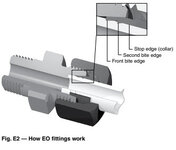chris ballance
Airman 1st Class
- 146
- Jul 21, 2022
Did all the major powers in WW2 have their own standard flared and flareless tube fitting standards like the US had AN? Were flared fittings dominant in fuel and hydraulic systems? Was there any degree of interchangeability?

